The Arctic Tern, Leatherback Turtle, and Dragonfly are among the animals with the longest migrations in nature.
Migration is a large-scale and regular movement observed in various species across the animal kingdom, from insects to mammals and birds. Animals become nomadic, navigating to pursue food sources and ideal habitats. Driven by seasonal changes, resource needs, or reproductive purposes, these migrations are fascinating demonstrations of survival instincts. Migratory species exhibit remarkable adaptability for their journeys, from physical traits like long wings in birds to streamlined bodies in marine creatures, supported by behavioral strategies. Migratory animals play crucial roles in nutrient distribution, pollination, and seed dispersal, helping shape predator and prey populations, according to Interesting Engineering.
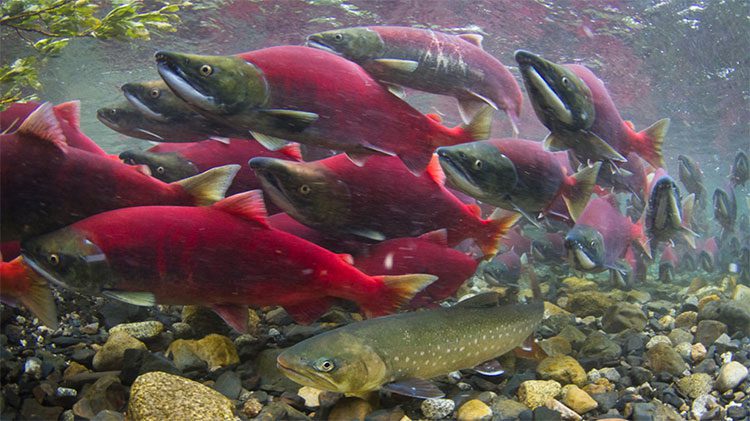
Salmon is one of the most impressive migratory species, with journeys reaching up to 3,800 km. The life cycle of salmon begins in freshwater rivers, after which they migrate to the ocean. They live in saltwater for about 4 years, then return to the rivers where they were born to spawn. After laying eggs, the female salmon will die. The eggs hatch, and the young salmon continue the life cycle with a new remarkable journey.

The Northern Elephant Seal inhabits the coast of California and has the second longest migration route among mammals, traveling 21,000 km each year. Like other migratory animals, the Northern Elephant Seal also uses magnetic fields to navigate accurately.
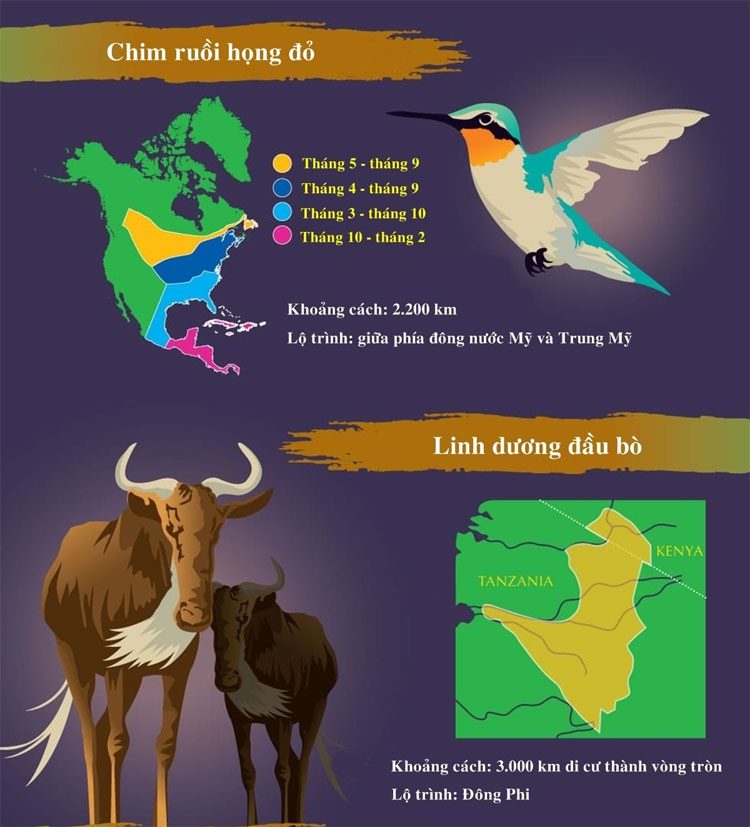
The Ruby-throated Hummingbird migrates 2,200 km.
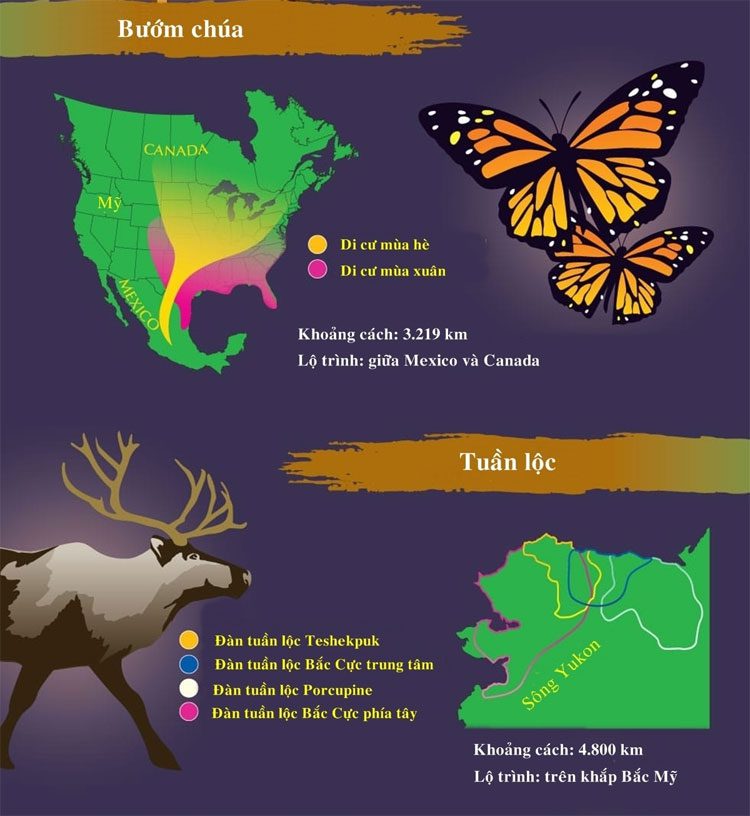
The Monarch Butterfly migrates in summer and spring.
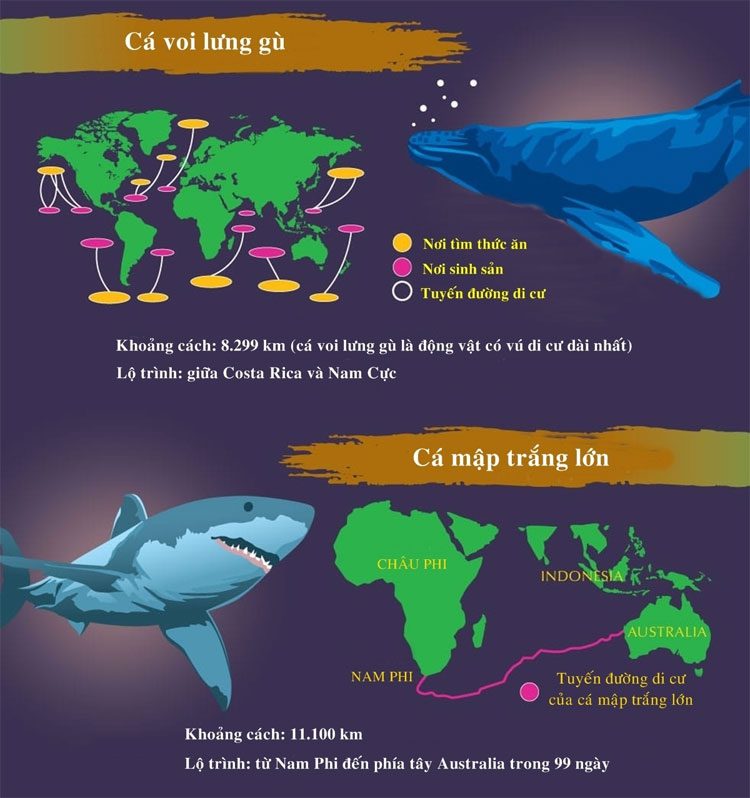
The Great White Shark migrates from South Africa to Western Australia in 99 days.
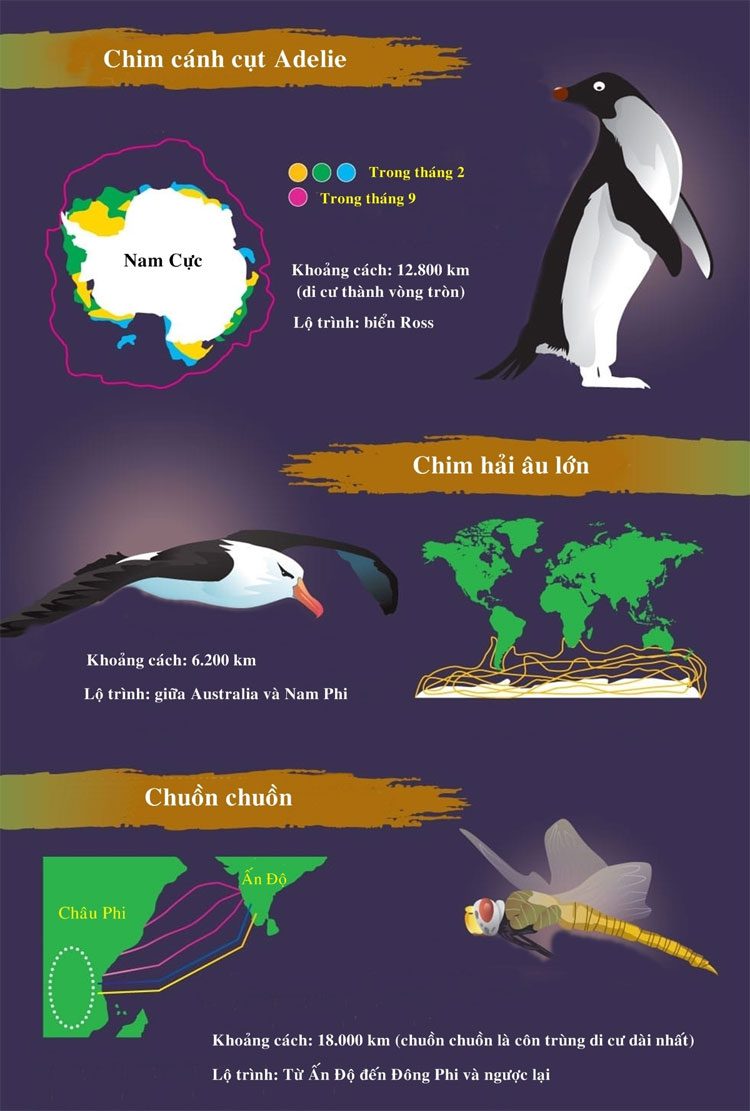
With a distance of 18,000 km, the dragonfly is the longest migrating insect.
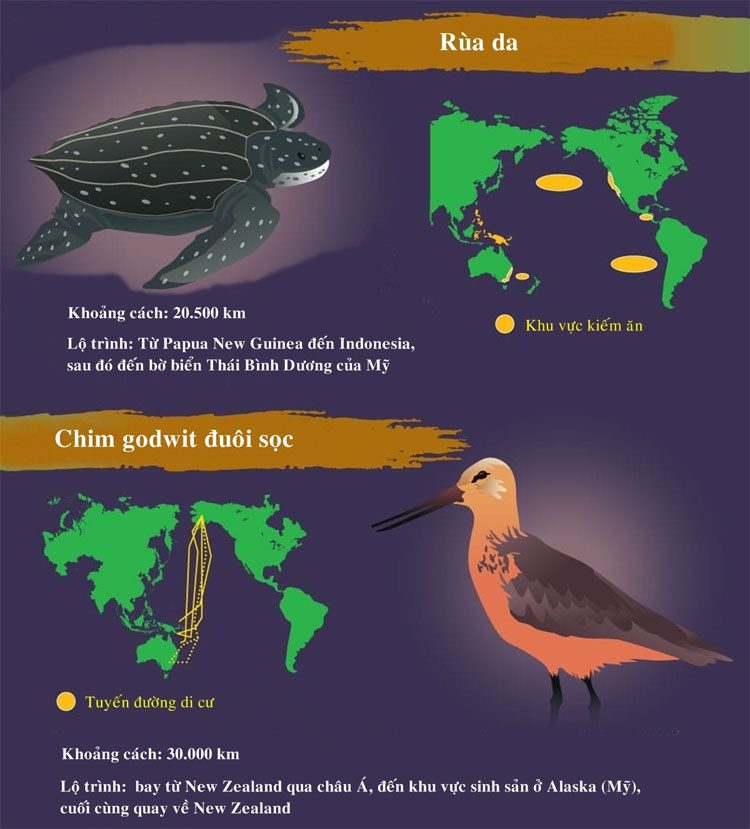
The Leatherback Turtle migrates 20,500 km.

The Arctic Tern holds the record for the longest migration distance in the world, reaching up to 96,000 km. This medium-sized bird has the longest migration route in the animal kingdom. With a breeding range around the poles, stretching across the Arctic and sub-Arctic regions, the Arctic Tern, weighing 86 – 127 grams, embarks on an incredible round-trip migration. Recent studies reveal an average annual distance of 70,900 km for nests in Iceland and Greenland, and 48,700 km for nests in the Netherlands. These birds migrate from northern breeding grounds to the coastal areas of Antarctica, experiencing two summers each year. Their journey demonstrates endurance and navigational abilities unmatched by any other species. Notably, they can take winding paths to take advantage of wind directions. The Arctic Tern combines astronomical and environmental factors to navigate, showcasing an innate ability to travel vast distances with remarkable accuracy. Despite facing numerous challenges from natural obstacles and human threats, Arctic Terns consistently migrate each year.

Gray Whale: Average round-trip migration distance: 16,000 – 22,000 km. The Gray Whale is one of the longest migratory marine mammals, swimming 8,000 – 11,000 km annually. Divided into eastern and western populations, this whale migrates between feeding areas in the Bering and Chukchi Seas and breeding and calving grounds along the western coast of Baja California and southern California. The eastern population, consisting of around 27,000 individuals, migrates from Alaska to Baja California Sur. The western population, about 300 individuals, spends the summer in the Sea of Okhotsk. Gray Whales lack dorsal fins, and their migration includes many dramatic behaviors such as breaching the surface.
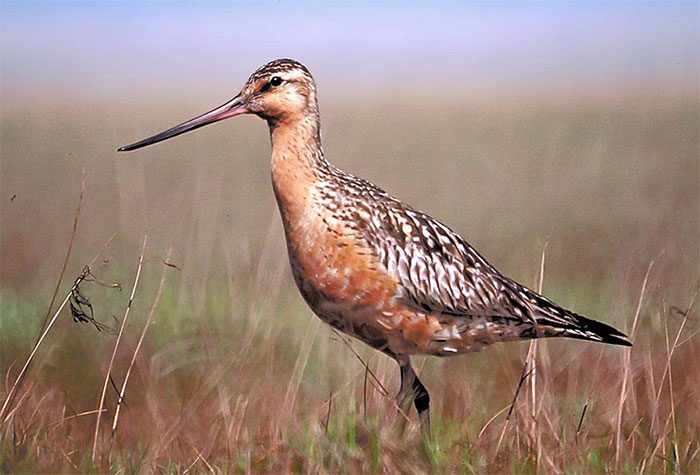
Bar-tailed Godwit: Average round-trip migration distance: 29,000 km. The Bar-tailed Godwit is an impressive migratory wading bird. Breeding in the Arctic coastal regions and tundra from Scandinavia to Alaska, this bird undertakes one of the longest non-stop flights in the animal kingdom to migrate. Notably, the subspecies Limosa lapponica baueri flies more than 29,000 km round-trip, the longest journey without stopping to feed. The migration includes flying from Arctic breeding grounds to coastal areas in the temperate and tropical zones of Australia and New Zealand. For instance, in 2022, a tagged Godwit flew non-stop from Alaska to Tasmania, covering a distance of 13,560 km in 11 days and one hour, setting a new record. To support such a long journey, these birds store a thick layer of fat, allowing them to fly 6,000 – 8,600 km. Conservation efforts are vital as the population of this species is declining.


















































